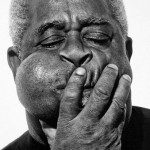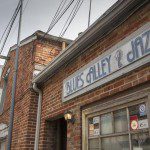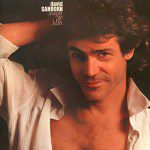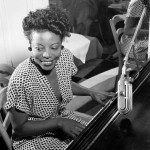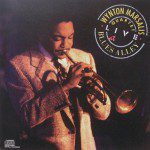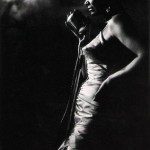Blues Alley at 50: the Whole World of Jazz
By • April 13, 2015 0 3057
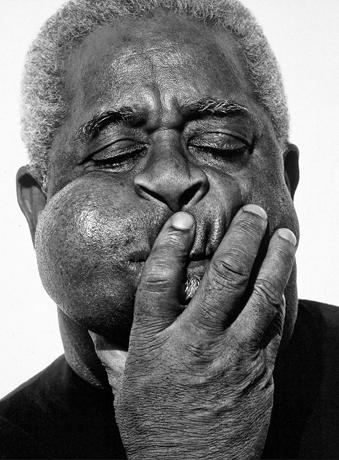
Harry Schnipper, executive director and owner of Blues Alley, recalled the first time he went to “the nation’s oldest continuing jazz supper club.”
“I was 17, I was a kid. It was 1968 and guitarist Larry Coryell was playing,” he said during an interview at the National Press Club. “I’ve been going there ever since, in one way or another.”
“In a lot of ways, it hasn’t changed a bit.”
And in a lot of ways, it’s changed a lot.
This is Blues Alley’s 50th anniversary year, and, physically, it hasn’t changed much at all. The sign is the same, and in the namesake alley, just off Wisconsin Avenue down from M Street, you have to jump back if you’re occupying the same space as a delivery truck.
Outside, a window displays Down Beat magazine signs from 2012 and 2014, designating Blues Alley as a Great Jazz Venue. Inside, it’s almost an idling time machine. It’s Friday afternoon, and Senegalese guitarists Cheikh Ndoye and Baaba Maal and their group are setting up on the small bandstand, presided over by the classic Blues Alley logo, a tuxedoed player hunched over his trumpet.
There are amps and bongo drums and instruments all over the lit stage. Japanese pianist Manami Morita, who’ll be playing with the gang that night, is tuning things up on the piano. Manager Chris Ross, stepson of former owner John Bunyan, is overseeing things.
The bar is still smallish, not enough to host a rugby team, with the usual bottles of high-end blends and bourbons and what not. The posted sign says Capacity 124. Nearby are rows of black-and-white photos of performers who have appeared at Blues Alley, from stars like pianist Ramsey Lewis to relative newcomers like trumpeter Sean Jones.
The pictures are resonant of an international reputation. The storied history of Blues Alley as a place where big names got their start, and where bigger names came back time and again, have given the place a vibe that is indicative both of excellence and of the changing, swiftly expanding world of jazz.
The list of names is actually kind of astonishing: Lewis, Monty Alexander (still rolling hot), Mose Allison, Tony Bennett, the late jazz guitarist Charlie Byrd (who opened up his own place down the street for a time), Steve Jordan, Les McCann, Oscar Peterson, Charles Mingus, Peter Nero, Max Roach, Sonny Rollins, George Shearing, the sublime vocalist Sarah Vaughan, Grover Washington, Jr., Nancy Wilson, Ron Holloway, Ahmad Jamal, Stanley Turrentine and Earl “Fatha” Hines.
And, of course, there was the great jazz ambassador with the big cheeks and the wholly original style: Dizzy Gillespie, the pioneering trumpet player who took bebop beyond Charlie Parker and brought it into the mainstream. Gillespie was closely associated with Blues Alley. He was honorary chairman of the Blues Alley Jazz Society, which – along with the Blues Alley Youth Orchestra, to which he lent his time and name – are thriving under Schnipper as audience- and artist-building non-profit enterprises.
Schnipper is an organized kind of guy. He knows what he wants to say, he has a plan, a schedule. But the more you talk with him, the more you see a guy who’s driven by a passion for jazz. There isn’t any question that Schnipper – who’s also an adept and busy businessman and real estate broker – is still smitten with jazz. He keeps his eye on every table and napkin in Blues Alley, and seems to remember every note from a quartet, a sax, a vocalist, that he’s ever heard there.
“The thing about this is that you really get to know all the players, the musicians, the performers. People have built their careers here.”
Notable among them is Wynton Marsalis, without question jazz’s reigning superstar. In December of 1986, when he was just 26 years old, he recorded “Wynton Marsalis Live at Blues Alley.” Other “Live” albums followed, including one by the haunting local vocalist Eva Cassidy, who died of cancer, age 33, in 1996.
A musician, clarinetist Tommy Gwaltney, opened Blues Alley in 1965, but it was Bunyan – a businessman who loved jazz unabashedly – who steered it to prominence, to the point that big-name musicians played there regularly.
This year is also the 30th anniversary of the Blues Alley Jazz Society. Schnipper, who came on board in the mid-1990s, likes to use the title of executive director, which is a job description, but in truth, he said, “I am the owner and have been so since 2005.”
With the two nonprofits, the Jazz Society and the Youth Orchestra, “we look to the future,” he said, “Jazz is different now.”
“We’re educating young musicians through the society and the orchestra. This, in turn, at some point, expands the audience, and expands the world of emerging artists.” Schnipper was named the Mid-Atlantic Jazz Festival’s Jazz Educator of the Year in February.
In many ways, the operation is a word-of-mouth happening that has persisted for five decades. While Georgetowners like the idea of Blues Alley and its international cred and rep, they don’t make up the bulk of the club’s audience. “Tourists, people from all over who have heard of the place“ are the majority, said Schnipper. “You can travel abroad in Europe and Asia and other places, and people know Blues Alley.”
Programming is changing, too. Blues Alley now sponsors a yearly Big Band Jam with a tribute theme, featuring top-notch players. This year’s jam – the eleventh – is a special tribute to the “Ella and Louis Legacy,” with Sean Jones as artist-in-residence. It will be held April 18-30 at venues including (besides Blues Alley) the Kennedy Center, Pershing Park and THEARC in Ward 8.
“Jazz itself is like this big umbrella, and it includes its roots, different kinds of music. Its singular core is improvisation, which is why it is such an appealing live performance event,” said Schnipper. “One of the things you’ll see just looking at the schedules and calendar is the variety – lots of emerging musicians and artists, but also established stars, and groups and artists from around the world. But we try to present the whole world of jazz.”
Check out Blues Alley’s rich, full-of-stories website and you’ll get a sense of that world.
He calls his wife, Madeline (they’ve been married 21 years), “the glue that holds the place together. She does everything here, and she knows everything.” An attractive, warm and straight-talking redhead, you can find her in the booth upstairs where the lights and sound get turned on, or all over the place.
Ross, the manager, pointed to the Green Room. “When Eartha Kitt sang here, she complained that there wasn’t a window in it. So we had an artist paint a window on the wall. That’s why this painting’s here.”
“In the end, this place, any real jazz place, is about atmosphere,” Schnipper said. “The music, the lights, the people. Listening.”
In Blues Alley, there’s a “quiet, please” rule while the musicians play. Out of respect, for sure. But also because you might miss something: a note that hangs out there like a curve ball, a riff that goes to a place musically unmapped, a song that takes you tripping.
And at times like those, you can hear the backbeat musical whisper of everyone who’s ever played there.
Dear Georgetowner,
I just remembered that when we met last Thursday you encouraged me to contact you on or before today. First, let me say that I am sorry that you two could not attend that evening’s performance. The shows were a game-changer and shall evermore change the way we present music at Blues Alley. Furthermore, I wish to remind you that my two favorite jazz artists are probably Duke Ellington and Quincy Jones for their instrumentational/compositional/orchestrational and inspirational abilities.
Finally, we chatted about some of the more identifiable personalities that have graced the Blues Alley stage over the past five decades. Stand-out artists would include the likes of Dizzy Gillespie, Wynton Marsalis, Phyllis Hyman, Tony Bennett, Mary Lou Williams, Dave Brubeck, Sarah Vaughn and Billy Eckstine. Some of my own personal favorites include Dr. John, Miles Davis, David Sanborn, Boz Scaggs and Harry Connick, Jr. A compendium of all performers or performances should exist but regrettably does not. Thank you for honoring Blues Alley with our first feature article.
— Harry Schnipper
- Jazz player Dizzy Gillespie with his signature “pouch” cheeks. | Photo by Herb Ritts Jr.
- Neshan Naltchayan
- Lateef Mangum-D.C. Government

